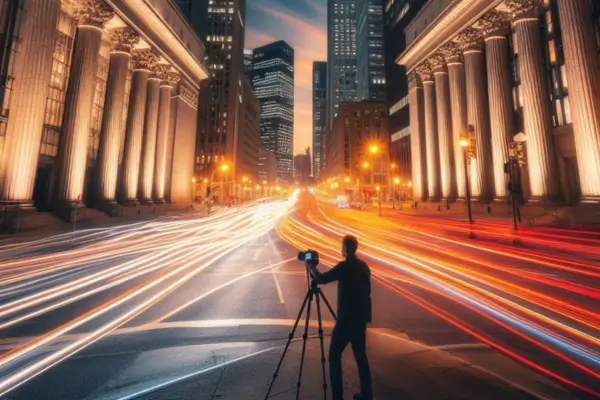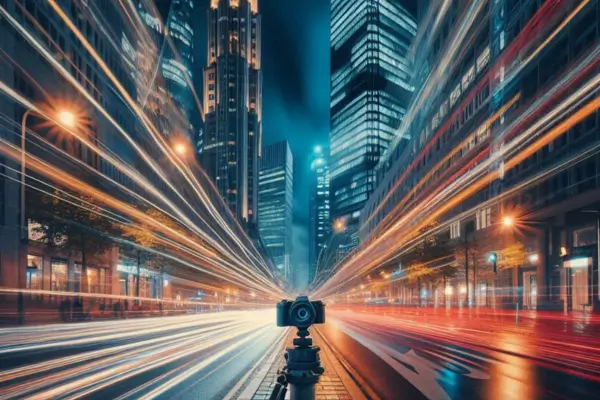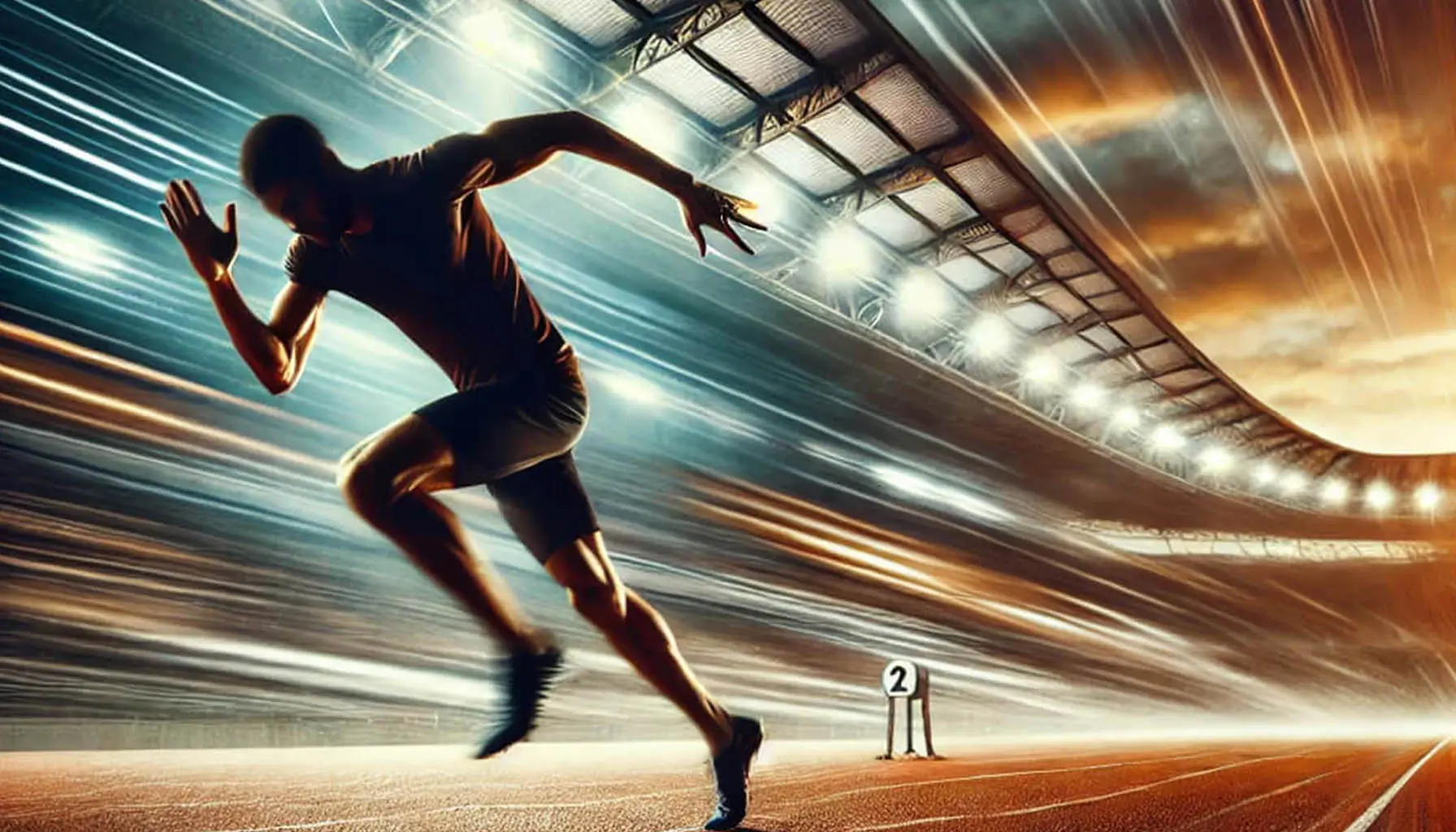Photography is more than just freezing a moment in time—it’s about telling a story, evoking emotions, and capturing the essence of a scene. One of the most powerful ways to bring life to an image is by showcasing movement. Whether it’s the rush of a speeding car, the graceful flow of a dancer, or the chaotic energy of a bustling city street, movement adds depth, excitement, and dynamism to a photograph.
Mastering the art of capturing motion allows photographers to create images that feel alive. A well-timed shot can convey speed, rhythm, or even suspense, drawing the viewer into the action. The key lies in understanding how to control camera settings, use creative techniques, and make the most of post-processing to enhance the sense of motion.
In this article, we’ll explore essential tips for photographing dynamic scenes, from adjusting shutter speed and using panning techniques to composing shots that highlight energy and fluidity. Whether you’re a beginner looking to experiment or an experienced photographer aiming to refine your skills, these insights will help you bring movement to life in your images.
Understanding Motion in Photography
Photography is all about capturing a moment in time, and movement plays a crucial role in adding life and energy to an image. Whether you want to freeze a high-speed action or create a sense of motion with intentional blur, understanding how to control movement in photography is essential.
The Difference Between Frozen Motion and Motion Blur
There are two primary ways to capture movement in photography: freezing action and creating motion blur.
- Frozen Motion: This technique stops movement in its tracks, making fast-moving subjects appear crisp and sharp. It is commonly used in sports photography, wildlife shots, and action scenes. A fast shutter speed (e.g., 1/1000s or higher) is necessary to achieve this effect.
- Motion Blur: In contrast, motion blur conveys a sense of speed or fluidity by allowing parts of the image to blur intentionally. This is achieved by using a slower shutter speed (e.g., 1/30s or lower). Motion blur is commonly used in creative photography, such as light trails, waterfalls, or panning shots of moving subjects.
The Impact of Shutter Speed on Capturing Movement
Shutter speed is the key factor in controlling motion in photography. Here’s how different settings affect your images:
- Fast Shutter Speeds (1/500s – 1/4000s): Ideal for freezing action, such as a bird in flight, a sprinter mid-stride, or a dancer in mid-air. The faster the subject, the quicker your shutter speed needs to be.
- Medium Shutter Speeds (1/60s – 1/250s): A balanced range that can capture movement while keeping details sharp, often used for handheld shots of people walking or slight motion in portraits.
- Slow Shutter Speeds (1/10s – 30s): Used to create motion blur, such as silky waterfalls, car light trails, or ghostly effects in night photography. A tripod is often necessary to keep stationary elements sharp while allowing motion to blur.
How Different Types of Movement Require Different Approaches
Each type of photography presents unique challenges when capturing motion:
- Sports Photography: Requires fast shutter speeds and continuous autofocus to keep moving subjects sharp. Burst mode can help capture the perfect moment in a fast-paced environment.
- Nature & Wildlife: Freezing birds in flight or animals in motion demands quick reflexes and a high shutter speed, while slower shutter speeds can be used to create dreamy water effects in landscape photography.
- Street Photography: Movement in urban environments can be unpredictable. Panning techniques or slower shutter speeds can add a sense of motion to people, cars, or cyclists, while freezing key moments tells compelling stories.
Understanding these principles allows photographers to experiment and control movement effectively, transforming everyday scenes into dynamic, visually engaging images.
Essential Camera Settings for Dynamic Scenes
Capturing movement effectively requires an understanding of how your camera settings influence motion. Mastering shutter speed, aperture, ISO, and autofocus modes will allow you to control the way motion is rendered in your shots.
Shutter Speed: Fast vs. Slow Shutter Speeds and Their Effects
Shutter speed is one of the most critical settings when photographing dynamic scenes. It determines how long your camera’s sensor is exposed to light, affecting whether motion appears frozen or blurred.
- Fast Shutter Speed (1/500s – 1/4000s): Ideal for freezing fast-moving subjects like athletes, wildlife, or action-packed moments. A higher shutter speed captures crisp details without motion blur.
- Slow Shutter Speed (1/10s – Several Seconds): Useful for creating motion blur effects, such as light trails, silky waterfalls, or a sense of speed in urban settings. Tripods can help stabilize the camera when using slow shutter speeds.
Tip: Use shutter priority mode (Tv or S mode) to control shutter speed while letting the camera adjust aperture and ISO for proper exposure.
Aperture & ISO: Balancing Exposure While Shooting Moving Subjects
Shutter speed isn’t the only factor influencing motion photography. Aperture and ISO work together to ensure proper exposure:
- Aperture (f/1.8 – f/11): A wide aperture (lower f-number) allows more light in, helping in low-light situations while creating a shallow depth of field. A narrower aperture (higher f-number) ensures more of the scene remains in focus, which can be useful for landscape shots that include moving elements.
- ISO (100 – 3200+): Raising ISO boosts brightness in darker environments, but too high an ISO can introduce noise. When using fast shutter speeds in low light, increasing ISO is often necessary to maintain exposure.
Tip: In bright conditions, use a low ISO (100-200) to reduce noise. In low light, increase ISO cautiously while balancing noise reduction in post-processing.
Autofocus Modes: When to Use Continuous Autofocus (AI Servo / AF-C) vs. Single Autofocus
Autofocus plays a crucial role in capturing moving subjects with precision. Different autofocus modes help optimize sharpness depending on the type of motion:
- Continuous Autofocus (AI Servo for Canon / AF-C for Nikon & Sony): Best for tracking moving subjects. The camera continuously adjusts focus as the subject moves, making it ideal for sports, wildlife, and fast-paced action.
- Single Autofocus (One-Shot AF for Canon / AF-S for Nikon & Sony): Locks focus on a stationary subject when the shutter button is half-pressed. This is useful for portraits or subjects with minimal movement.
Tip: If your subject moves unpredictably, combine continuous autofocus with burst mode to increase your chances of capturing a perfectly focused shot.

Techniques for Capturing Motion Effectively
Capturing movement in photography requires not only technical precision but also creative vision. Whether you’re shooting fast-moving athletes, flowing water, or city lights at night, different techniques can help you convey energy and motion in compelling ways. Below are some of the most effective methods for achieving dynamic motion shots.
Panning: Creating a Sense of Speed and Motion
Panning is a powerful technique used to emphasize speed and direction while keeping the subject sharp against a blurred background. This effect works well for sports, wildlife, and street photography.
How to achieve the perfect panning shot:
- Set your camera to shutter priority mode (Tv or S) and choose a slower shutter speed (e.g., 1/30s – 1/60s, depending on the subject’s speed).
- Track the subject smoothly with your camera while pressing the shutter button.
- Maintain a consistent motion and follow through even after taking the shot.
- Use continuous autofocus (AF-C/AI Servo) to keep the subject sharp.
- Practice with different shutter speeds to find the right balance between background blur and subject clarity.
Slow Shutter Effects: Creating Artistic Motion Blur
Using a slow shutter speed can transform ordinary motion into stunning visual effects, whether it’s silky waterfalls, light trails from passing cars, or blurred crowds in a bustling city.
Techniques for slow shutter motion effects:
- Light Trails: Use a tripod and set the shutter speed between 5 to 30 seconds to capture moving lights at night.
- Waterfalls & Rivers: A shutter speed of 1/4s to several seconds creates a smooth, dreamy water effect.
- Crowd Blur: Slower shutter speeds (around 1/10s to 1s) can highlight movement while keeping stationary elements sharp.
- Use a neutral density (ND) filter in bright conditions to prevent overexposure.
Burst Mode: Capturing the Perfect Moment
When photographing fast action, such as sports, wildlife, or dance performances, timing is everything. Burst mode (also known as continuous shooting mode) allows you to capture multiple frames per second, increasing your chances of getting the perfect shot.
Tips for using burst mode effectively:
- Enable continuous shooting mode in your camera settings.
- Use a fast shutter speed (1/500s or higher) to freeze motion.
- Ensure you have a high-speed memory card to handle rapid image storage.
- Select continuous autofocus (AF-C) to keep moving subjects sharp.
Burst mode is particularly useful for unpredictable movements, allowing you to select the best frame later without missing key action.
Using Tripods and Gimbals: Stabilizing Motion Shots
When capturing motion blur or filming dynamic scenes, stabilization is essential to maintain sharpness and control over movement effects.
When to use a tripod or gimbal:
- Tripods: Ideal for long exposures (e.g., night photography, waterfalls, or star trails). They prevent unwanted camera shake and allow for precise framing.
- Gimbals: Perfect for smooth video footage or when panning handheld in action photography. They reduce vibrations and provide cinematic stability.
For extra stability, use a remote shutter release or camera timer to prevent even slight vibrations from pressing the shutter button.
Mastering these techniques will help you create dynamic, high-impact photographs that truly capture the essence of movement. Experiment with different settings and methods to discover what works best for your style of photography!

Creative Approaches to Convey Energy and Motion
Capturing movement in photography isn’t just about adjusting your camera settings—it’s also about using creative composition techniques to emphasize energy, direction, and emotion. By thoughtfully framing your shots, experimenting with angles, and leveraging the natural flow of motion, you can create visually compelling images that truly bring a scene to life.
Framing and Composition Techniques for Dynamic Storytelling
The way you frame a moving subject can dramatically impact how viewers interpret the motion in your photo. Consider these composition strategies:
- Leading Lines: Use natural or man-made lines (roads, rail tracks, waves) to guide the viewer’s eye along the path of movement.
- Negative Space: Leaving space in front of a moving subject creates a sense of anticipation and direction. For example, a runner positioned to the left with empty space to the right suggests forward motion.
- Rule of Thirds: Position your subject slightly off-center to create a more dynamic and engaging composition.
- Foreground and Background Elements: Including blurred foreground or background elements can enhance depth and emphasize speed.
Playing with Angles and Perspectives to Enhance Movement
The angle from which you shoot can drastically change the perception of movement:
- Low Angles: Shooting from below can make a subject appear faster, stronger, or more powerful, especially in sports photography.
- High Angles: Looking down on a moving subject can give a sense of scale and context, useful for capturing patterns in movement, such as crowds or vehicles.
- Tilted Horizon (Dutch Angle): Tilting your camera slightly can add a sense of chaos and excitement, perfect for action-packed scenes.
- Close-Ups vs. Wide Shots: A close-up can capture the intensity of motion in detail (e.g., dust kicking up from a runner’s feet), while a wide shot can place the movement in a broader environment, telling a bigger story.
Using Motion to Evoke Emotions and Moods in Photography
Beyond the technical aspects, motion in photography can be a powerful tool for storytelling and emotional impact:
- Blur for Drama and Energy: Intentional motion blur can create a sense of urgency, speed, or even tranquility, depending on the subject.
- Still vs. Motion Contrast: Placing a static subject within a moving environment (or vice versa) can highlight contrast and draw attention.
- Light and Color Effects: The use of long exposure in nighttime photography (such as light trails from cars) can create a dreamy, almost surreal mood. Similarly, capturing movement in soft golden light can enhance warmth and nostalgia.
By combining these creative techniques, you can transform ordinary movement into an artistic expression, making your dynamic scenes more engaging and impactful. Don’t be afraid to experiment with different approaches to discover what best suits your storytelling vision!

Post-Processing Tips for Enhancing Motion
Capturing movement in photography is only the first step—post-processing can help refine and emphasize the sense of motion, making your images even more compelling. Here are some essential editing techniques to enhance dynamic scenes effectively.
Adjusting Sharpness and Blur in Editing Software
A well-balanced combination of sharpness and blur can make a movement-focused image more impactful. If your subject is slightly out of focus, tools like sharpening filters, high-pass filters, or dehaze adjustments in software like Adobe Lightroom or Photoshop can help bring clarity to key areas.
For images where motion blur is a crucial artistic element, you can enhance it using the Radial or Motion Blur filters in Photoshop. These tools can amplify the sense of speed or directionality, making movement appear smoother and more intentional. If certain areas of the image appear too sharp or distracting, applying selective blur using a layer mask can help maintain focus on the subject while keeping the background dynamic.
Enhancing Colors and Contrast to Emphasize Movement
Color grading plays a crucial role in conveying energy and motion. Increasing the contrast between highlights and shadows can add depth and intensity to movement, especially in action-packed scenes.
For sports or street photography, boosting vibrancy and saturation can make colors pop, adding to the drama of the scene. In contrast, for long-exposure shots of moving water or light trails, a softer, more ethereal look can be achieved by adjusting white balance and toning down highlights to create a smoother flow.
Using split toning or color grading tools can also help direct the viewer’s eye along the motion path—cooler tones in shadows and warmer tones in highlights can create a sense of depth and movement.
Cropping for Better Composition and Impact
Sometimes, the initial composition may not fully convey the intended movement. Cropping strategically can enhance the sense of motion by placing the subject off-center, following the rule of thirds, or aligning key action points along diagonal lines.
If the image has too much empty space, a tighter crop can make the movement feel more immediate and engaging. On the other hand, leaving space in the direction of motion (known as “breathing space”) can reinforce the feeling of movement and anticipation.
When cropping, consider how leading lines, curves, or motion blur direct the eye through the frame. Adjusting the composition post-shoot can transform an ordinary action shot into a visually compelling dynamic scene.
Post-processing is a powerful tool for refining and enhancing motion in photography. By carefully balancing sharpness and blur, enhancing colors and contrast, and thoughtfully cropping for composition, you can turn a good action shot into a breathtaking image. Experiment with different editing techniques to find a style that best conveys the energy and movement in your photos.
Conclusion
Capturing movement in photography is both an art and a science. By understanding the impact of shutter speed, mastering techniques like panning and long exposure, and experimenting with different perspectives, you can create dynamic images that tell compelling stories. Whether you’re photographing athletes in action, city traffic at night, or waves crashing on the shore, motion adds life and energy to your shots.
The key to success is practice—don’t be afraid to experiment with different settings, angles, and styles. Every scene presents a new opportunity to refine your skills and develop your unique artistic vision.
Now, it’s your turn! Try out these techniques and share your best motion shots with us. What worked well for you? What challenges did you face? Drop your thoughts and photos in the comments or tag us on social media—we’d love to see your creativity in action! 🚀📸
